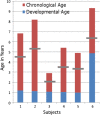Clinical translation of human neural stem cells
- PMID: 23987648
- PMCID: PMC3854682
- DOI: 10.1186/scrt313
Clinical translation of human neural stem cells
Abstract
Human neural stem cell transplants have potential as therapeutic candidates to treat a vast number of disorders of the central nervous system (CNS). StemCells, Inc. has purified human neural stem cells and developed culture conditions for expansion and banking that preserve their unique biological properties. The biological activity of these human central nervous system stem cells (HuCNS-SC®) has been analyzed extensively in vitro and in vivo. When formulated for transplantation, the expanded and cryopreserved banked cells maintain their stem cell phenotype, self-renew and generate mature oligodendrocytes, neurons and astrocytes, cells normally found in the CNS. In this overview, the rationale and supporting data for pursuing neuroprotective strategies and clinical translation in the three components of the CNS (brain, spinal cord and eye) are described. A phase I trial for a rare myelin disorder and phase I/II trial for spinal cord injury are providing intriguing data relevant to the biological properties of neural stem cells, and the early clinical outcomes compel further development.
Figures






References
-
- Spangrude GJ, Heimfeld S, Weissman IL. Purification and characterization of mouse hematopoietic stem cells. Science. 1988;241:58–62. - PubMed
-
- Morrison SJ, Weissman IL. The long-term repopulating subset of hematopoietic stem cells is deterministic and isolatable by phenotype. Immunity. 1994;1:661–673. - PubMed
-
- Morrison SJ, White PM, Zock C, Anderson DJ. Prospective identification, isolation by flow cytometry, and in vivo self-renewal of multipotent mammalian neural crest stem cells. Cell. 1999;96:737–749. - PubMed
Publication types
MeSH terms
LinkOut - more resources
Full Text Sources
Other Literature Sources

